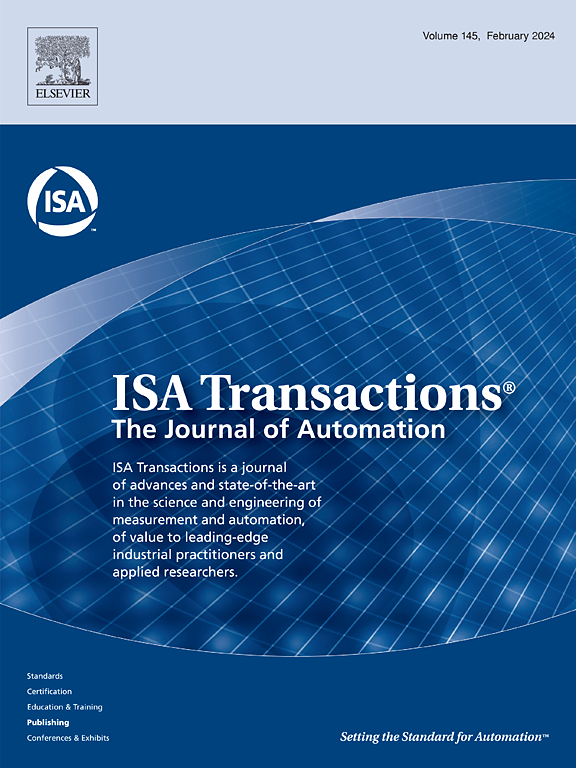通过非周期性间歇控制实现离散-时间延迟模糊系统的输入-状态稳定
IF 6.3
2区 计算机科学
Q1 AUTOMATION & CONTROL SYSTEMS
引用次数: 0
摘要
本文研究通过非周期性间歇控制实现延迟离散时间高木-菅野(Takagi-Sugeno,T-S)模糊系统的输入到状态稳定。我们首先考虑了非周期性间歇时间触发控制,并在准周期性条件的假设下通过数学归纳法提出了充分条件。基于推导出的充分条件,我们应用 Lyapunov-Krasovskii (L-K) 方法和描述符方法,推导出确保指数稳定性和输入到状态稳定性 (ISS) 的显式线性矩阵不等式 (LMI),并证明了非周期间歇时间触发控制器的存在,从而以更低的数值复杂度获得高效结果。接下来,我们考虑了附加参数大于 1 的非周期性间歇动态事件触发控制。这种策略允许引入的动态变量在控制间歇期间不是保持不变,而是增加。因此,与附加参数等于 1 的情况相比,所提出的动态事件触发策略导致发送信号的数量更少。最后,还给出了包括小车上的实际倒立摆在内的数值示例,以验证所提方法的有效性。本文章由计算机程序翻译,如有差异,请以英文原文为准。
Input-to-state stabilization of discrete-time delayed fuzzy systems via aperiodically intermittent control
This paper studies input-to-state stabilization of delayed discrete-time Takagi–Sugeno (T–S) fuzzy systems via aperiodically intermittent control. We first consider aperiodically intermittent time-triggered control, where we present sufficient conditions via the mathematical induction under the hypotheses of the quasiperiodicity condition. Based on the derived sufficient conditions, we apply a Lyapunov–Krasovskii (L–K) method together with the descriptor method to derive the explicit linear matrix inequalities (LMIs) that ensure the exponential stability and input-to-state stability (ISS), and show the existence of the aperiodically intermittent time-triggered controller that leads to efficient results with much less numerical complexity. We next consider aperiodically intermittent dynamic event-triggered control with an additional parameter that is larger than one. This strategy allows that the introduced dynamical variable does not remain constant but increases during the control rest interval. As a result, the proposed dynamic event-triggered strategy leads to a smaller number of sent signals than that for the case of the additional parameter which equals to one. Finally, numerical examples including a practical inverted pendulum on a cart are presented to verify the validity of the proposed method.
求助全文
通过发布文献求助,成功后即可免费获取论文全文。
去求助
来源期刊

ISA transactions
工程技术-工程:综合
CiteScore
11.70
自引率
12.30%
发文量
824
审稿时长
4.4 months
期刊介绍:
ISA Transactions serves as a platform for showcasing advancements in measurement and automation, catering to both industrial practitioners and applied researchers. It covers a wide array of topics within measurement, including sensors, signal processing, data analysis, and fault detection, supported by techniques such as artificial intelligence and communication systems. Automation topics encompass control strategies, modelling, system reliability, and maintenance, alongside optimization and human-machine interaction. The journal targets research and development professionals in control systems, process instrumentation, and automation from academia and industry.
 求助内容:
求助内容: 应助结果提醒方式:
应助结果提醒方式:


